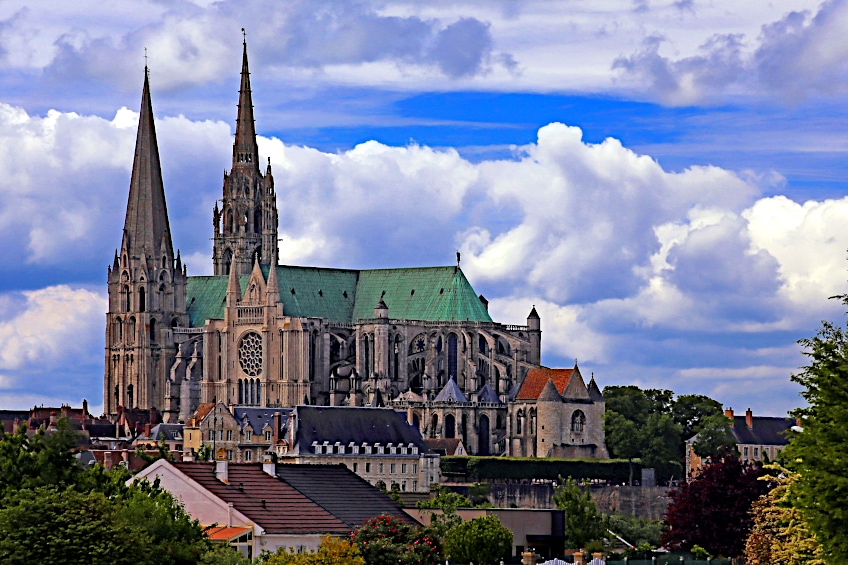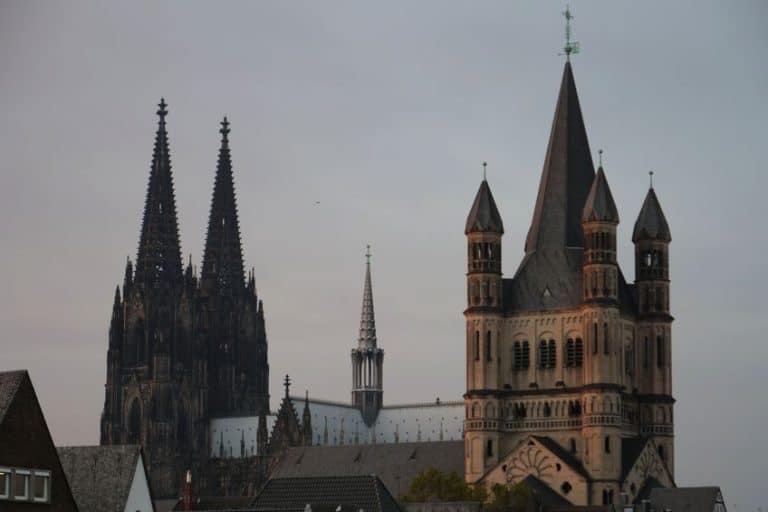Chartres Cathedral – Grande Dame of French Gothic Architecture
When was Our Lady of Chartres Cathedral built and who built this magnificent Cathedral in Chartres? These are a few of the questions you might be asking if this is the first time you are hearing about the Cathedral of Chartres. The famous church has many renowned features such as the rose windows, high altar, choir wall, and the Chartres Cathedral labyrinth. In this article, we will explore the history and features of this beautiful building and answer any queries you may have, for example, what is the Chartres Cathedral made of and what religious relic does Chartres Cathedral house?
Cathedral of Our Lady of Chartres (1252) – Chartres, France
| Date Completed | 1252 |
| Architect | Master of Chartres (c. 13th century) |
| Function | Cathedral |
| Location | Chartres, France |
Between 1190 and 1220, the Cathedral of Chartres in northern France was erected in its present Romanesque and Gothic form. It drew pilgrims from all over as a larger version of previous cathedrals that once existed in the same location. It is renowned for its sculpture, grandeur, and exquisite stained-glass windows.
The cathedral has hosted multiple noteworthy events, including King Henry IV of France’s coronation, as well as Saint Bernard of Clairvaux who notably went there to promote the merits of supporting the Second Crusade. Since 1979, UNESCO has classified the building as a World Heritage Site.

The History of the Cathedral of Chartres
Chartres has been an influential Christian center from at least the fourth century onward when it served as a bishop’s seat. The establishment of a cathedral in the city was first documented in historical accounts in 743 AD when the Duke of Aquitaine attacked and devastated the city. The citizens of Chartres rebuilt it, but it only lasted around 100 years before being razed when the Viking chieftain Hastings set fire to the city in 858 AD. Undaunted, the people built a third church, devoted to the Virgin Mary and dedicated in 876 AD.
The cathedral acquired its most renowned holy relic at this point, the Sancta Camisia, a garment supposedly worn by Mary when in labor with Jesus Christ.

The artifact was given by Charles the Bald, Charlemagne’s grandson, and is still kept in the treasury of the cathedral presently. The Sancta Camisia not only guaranteed to defend Chartres against future invasions, but it also drew many believers from all around who wished to witness it for themselves. The cathedral was well on its way to becoming an important pilgrimage site, and it drew crowds afflicted with various illnesses as it was known for the effectiveness of its healing abilities.
To best deal with all of these pilgrims, the cathedral’s flooring, for instance, was given a gradual inclination to assist washing, and some of the stained-glass window panels could be readily removed to give the area a thorough airing every once in a while.
Another invasion of Chartres appeared inevitable in 911 AD, but this time the inhabitants could seek protection from the Sancta Camisia. When the bishop of Chartres displayed the holy relic on the city’s gates, the Norsemen departed, and Rollon eventually converted to Christianity. It was just a momentary reprieve since Chartres was besieged by the Duke of Normandy, in 962 AD.
In addition to being a popular pilgrimage destination, Chartres developed a status as a center of study.

The Benedictine monks from the monastery just outside the city were well-known for their intellectual achievements, but the cathedral’s own institution was even more renowned.
In 990 AD, the Benedictined recruited the famous bishop-scholar Fulbert and positioned itself as the educational center in France, a status it would keep until 1215 when the University of Paris was founded.
Then misfortune came, and the cathedral was destroyed by fire in 1020. The next incarnation, however, backed by monarchs and aristocracy from France, Denmark, and England was going to be far larger and finer than the previous versions.
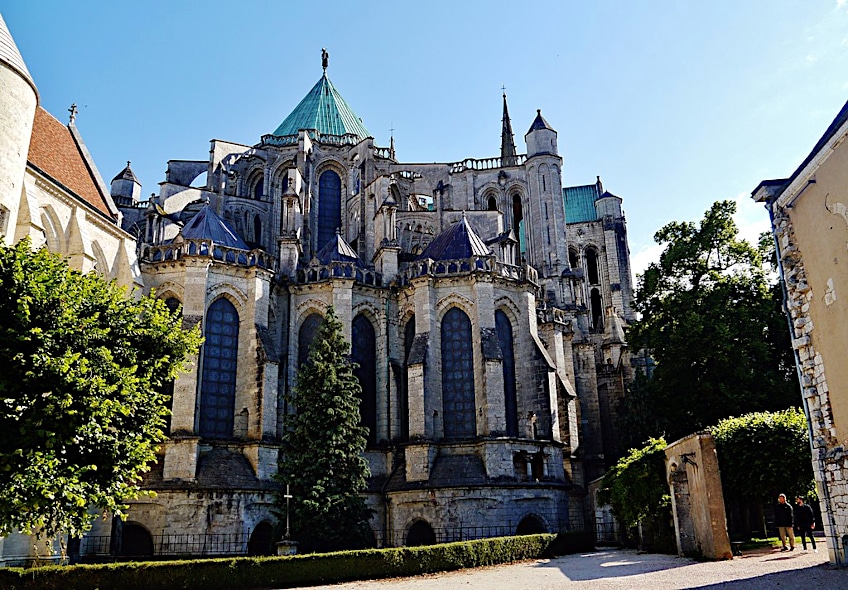
From the French Revolution to the 19th Century
A mob stormed the cathedral and started to demolish the sculpture on the northern porch in the early days of the French Revolution, but was halted by a larger mass of townsfolk.
The local Revolutionary Committee planned to demolish the church with explosives and commissioned a local architect to determine the ideal location for the blasts.
This architect rescued the structure from being cancelled by pointing out that the massive amount of debris from the demolished structure would block the streets for years.
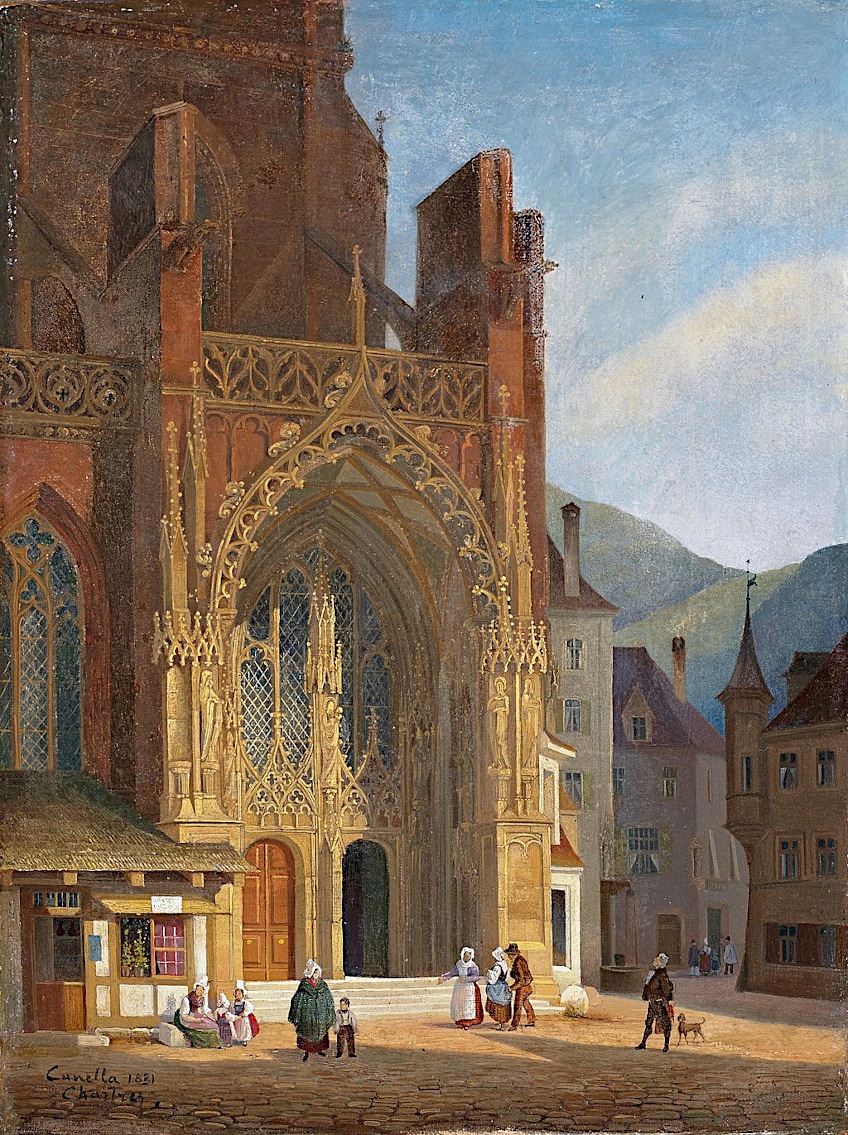
The cathedral, like other important cathedrals in the region, became state property of France, and prayer was suspended until Napoleon’s reign, although it was not further destroyed.
A fire broke out in 1836 as a result of workmen’s incompetence, destroying the wooden roof as well as the two belfries but leaving the structure of the building and stained glass intact.
The previous roof was removed and rebuilt with a copper-covered roof supported by an iron frame. The framework above the bridge had the widest length of any iron-framed building in Europe at the time.
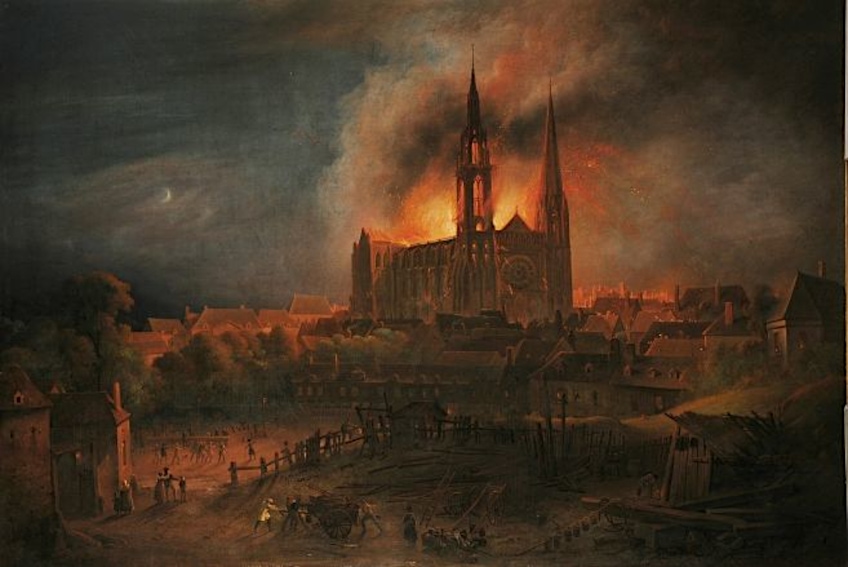
World War II
In France, the Second World War was fought between the Germans and the Allies. In July 1944, the Canadians and the British were confined to the south of Caen. The Americans and their units devised a detour to the Germans. While some Americans moved south and west, others were caught up in a push east of Caen that took them beyond the German frontline. Hitler directed German Commissioner Kluge to travel west in an attempt to block off the Americans. This eventually led to the Allies’ arrival in Chartres in mid-August 1944.
The church was rescued from being destroyed on the 16th of August, 1944, owing to Welborn Barton Griffith, an American Colonel who questioned the order to bomb the cathedral.

The Americans suspected that the steeples and turrets served as observation points for German artillery. Joined by a volunteering soldier, Griffith instead went to see if the enemy was using the church. Griffith noticed that the church was vacant, so he ordered the cathedral bells to ring to warn the Americans not to attack.
Construction and Design of the Chartres Cathedral
The lower half of the new building was obviously the first to be completed, and in 1024, a massive crypt, the biggest in the entire country, was created. The upper construction is Romanesque in style, with a massive core nave, aisles, and apse chapels. There was also a bell tower, a northern tower, and a west porch by 1028.
An expansion project was in the works in the 1130s. A free-standing structure with a wooden spire was constructed in the northwest corner. The 103-meter-tall southwestern tower with its unique octagonal stone spire was the next significant addition.
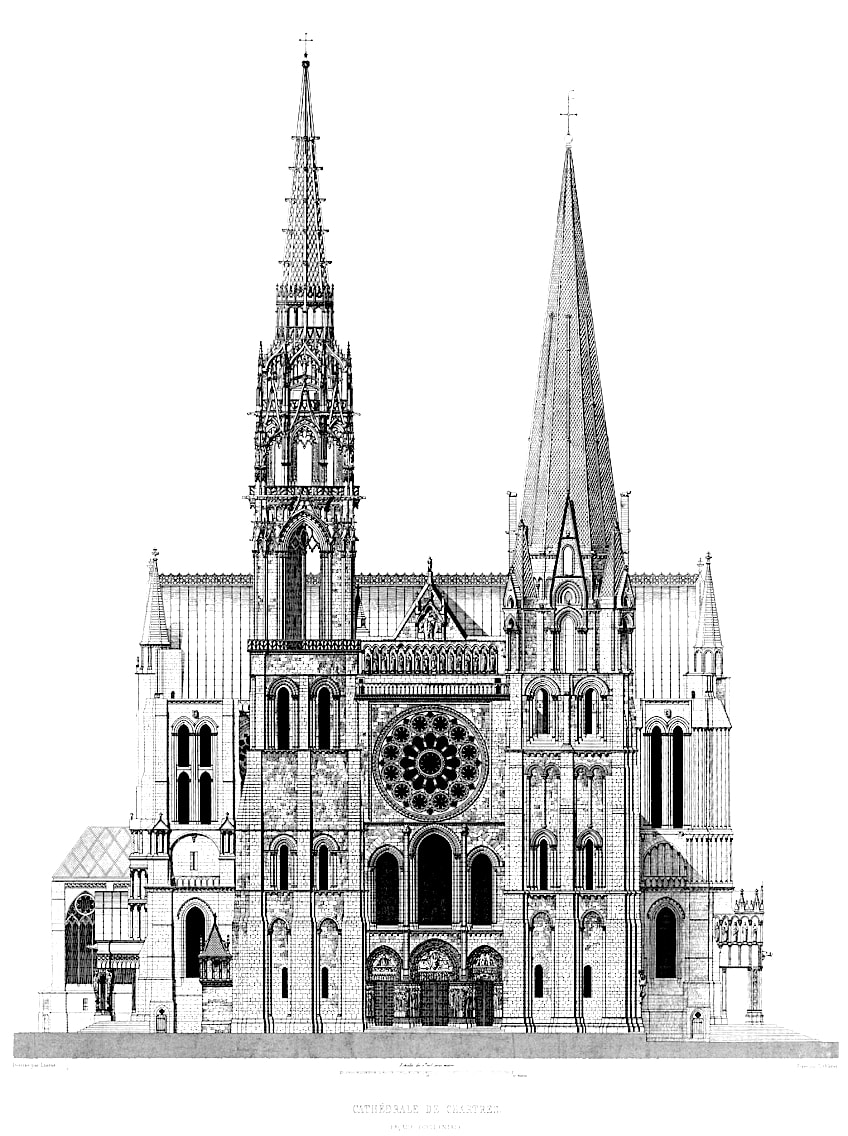
The crypts were expanded to connect both towers, between which a massive gateway with three windows and a three-doorway entrance, the Royal Portal, was erected. All of this work culminated in a very magnificent cathedral spanning around 135 meters in length and 74 meters wide.
However, in June 1194, a fire broke out, causing significant damage. Luckily, the Sancta Camisia, west towers, and Royal Portal escaped this new disaster unharmed. The bishop assembled his congregation and began constructing the church on an even bigger scale than previously, using royal finances.
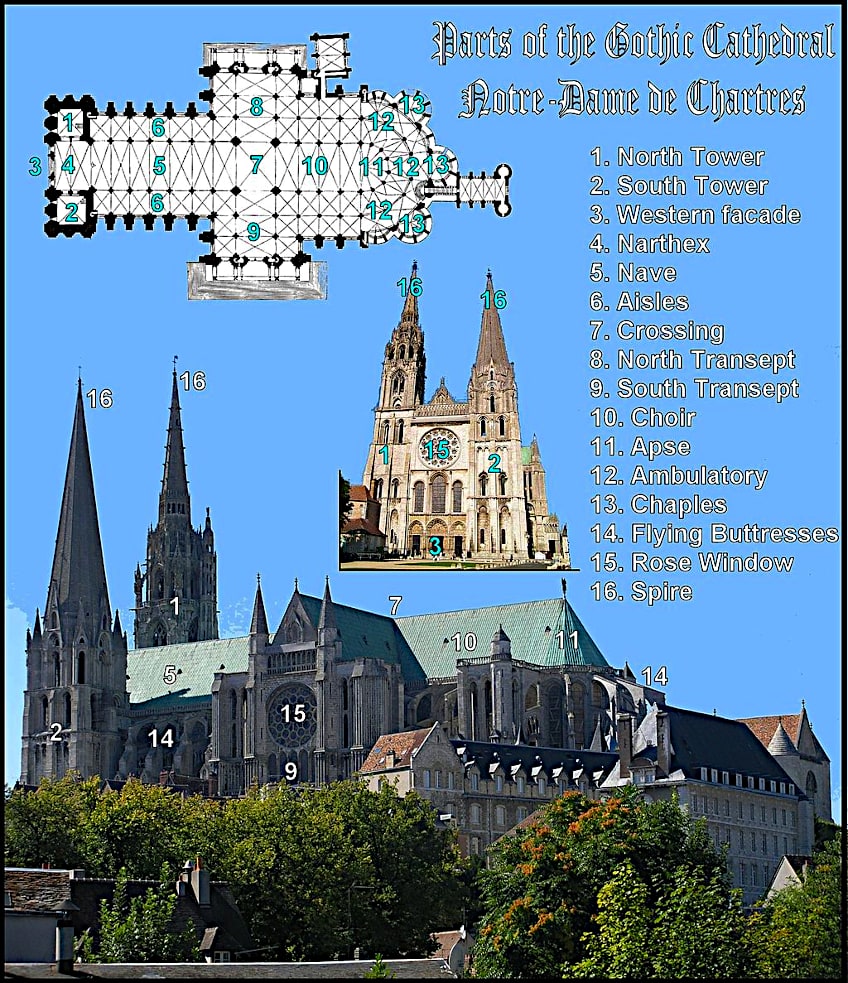
As the 13th century progressed, a massive 33-meter-wide North Porch with a doorway was erected, and the famed stained-glass windows were placed, many of which were donated by rich aristocrats from around Europe. The crypt was expanded, its walls were doubled, and chapels were added that varied between Gothic and Romanesque designs.
The floor plan was changed to a Latin cross by constructing a broad transept and raising the entire building, producing a large and vaulted interior area with a double gallery.

Exterior flying buttresses with cross-ribbed vaults were required for further support, but the advantage was the possibility of exceptionally tall windows adorned with jewel-like stained glass. The South Porch, which is only a few meters shorter than its northern counterpart, was constructed with a flight of stairs leading to its triple-arched doors.
By 1220, the masterpiece had been completed, and it amazed everyone who saw it.
Later Modifications
However, it wasn’t the end of the construction history, as several extensions followed, most prominently the vestry in the mid-13th century, added on to the end of the Northern Porch. Between 1324 and 1353, the Saint Piat Chapel, which presently houses the treasury, was added to the apsidal chapels. The northern tower’s spire was restored in 1507, owing to the kindness of Louis XII, after it was destroyed by a lightning strike.
The new grandiose Gothic design of the steeple, which fully overshadowed its modest southern twin, was completed in 1513 and boosted the tower’s elevation to roughly 111 meters.
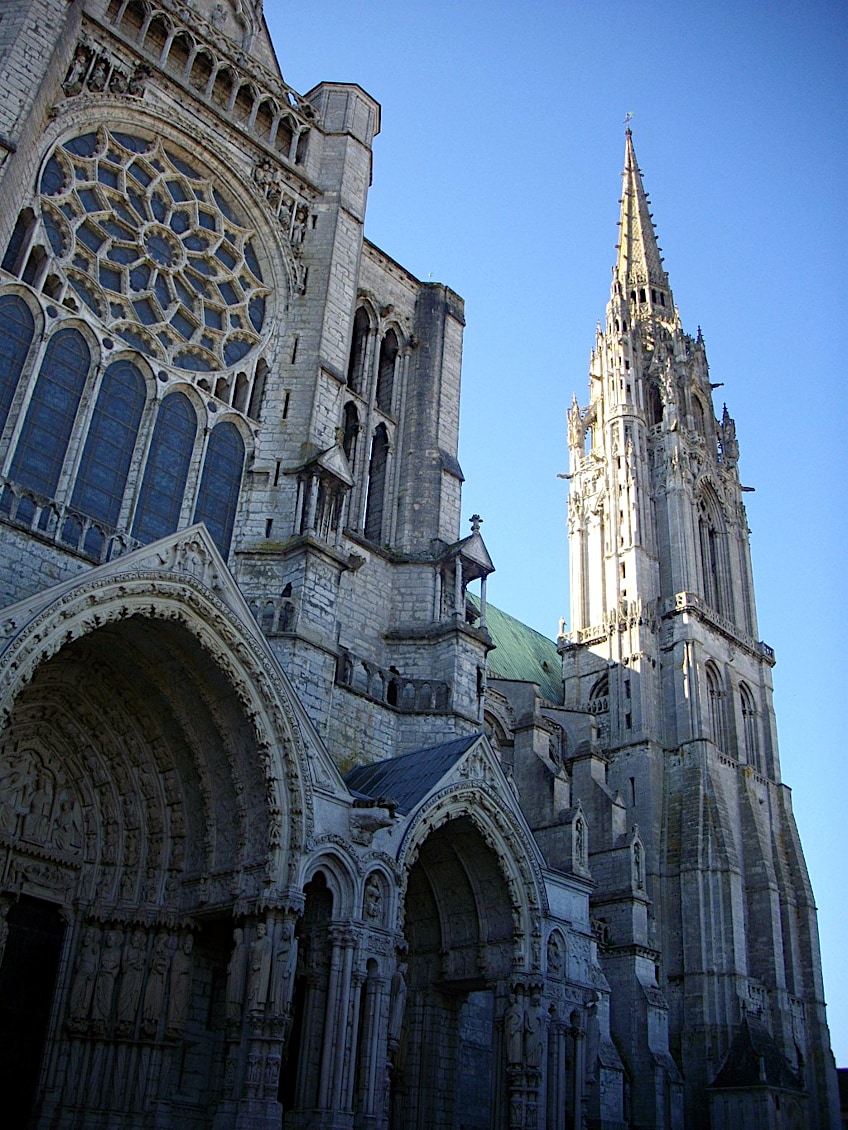
King Henry IV of France was inaugurated in Chartres Cathedral on the 27th of February, 1594, rather than the usual Reims Cathedral, because both Reims and Paris were controlled at that period by the Catholic League. The service was held in the church’s choir, following which the Bishop and King ascended the rood screen to be viewed by the congregation in the nave. Following the service and a prayer, they adjourned to the bishop’s mansion near the church for a dinner.
Further internal alterations were done in 1753 to accommodate new religious practices. The stone pillars were stuccoed, and the tapestries draped behind the booths were substituted with marble reliefs.
The rood screen that divided the ceremonial choir from the nave was demolished, and the current stalls were installed in their place. Simultaneously, some of the stained glass in the high ceiling was substituted with grisaille windows, significantly enhancing the light on the high altar in the church’s center.

Cathedral Artworks
The Chartres Cathedral was renowned for its art. This includes the magnificent sculptures and stained-glass windows. Below, we will go into more detail about these beautiful adornments.
Sculptures of the Cathedral of Chartres
The three spectacular porches feature the greatest external sculptural work. The West or Royal Portal incorporates Judah’s rulers and queens, as well as Old Testament prophets, onto the columns that separate the three openings. Relief images from Christ’s life and crucifixion are shown on the upper frieze.
The porches on the south and north sides display events from the Creation to the Last Judgment, as well as images of Jesus Christ, his disciples, saints, and holy men.

The several devils dragging off offenders to their dreadful fate, including a nun in one instance as a warning that the most terrible sort of sinner was a knowledgeable one, are among the most stunning figures. The screen that covers the altar is the cathedral’s main sculptural highlight.
The screen includes 40 niches housing massive figurative sculptures displaying significant episodes in Mary and Jesus’ life from the Nativity to the Resurrection, which were completed around 1530 and gradually expanded over the next 200 years.
Stained-Glass Windows
Chartres’ stained-glass windows are the most extensive collection remaining from the Middle Ages. Many, including the eye-catching Blue Virgin window, come from the 12th century, while over 150 originate from the beginning of the 13th century. There are religious images depicting major Bible stories for the devout, as well as numerous portrayals of kings, queens, aristocrats, martyrs, warriors, and clergy. The city’s traders contributed 42 windows to the church, which appear in a variety of smaller settings depicting a wide range of medieval occupations from butchers to barrel makers.
When reading a window that tells a tale, such as the story of a martyr, most windows should be viewed from left to right, beginning at the bottom.

The story of the Good Samaritan, with 24 panels, is an illustration of such a window. Other notable instances are the window representing the Passion and Resurrection, which dates from around 1150 and features 14 episodes from Jesus Christ’s last moments on earth.
The Zodiac window depicts agricultural landscapes and 12 Zodiac signs, with each labor related to the customary time of year in which it was conducted, for instance, Virgo next to grape pressing.
Furthermore, there are three principal rose windows, the largest of which is the stunning west rise, which measures over 15 meters in diameter, was built about 1215 and portrays images from the Last Judgement. A middle oculus depicting Christ as Judge is encircled by a ring of 12 coupled roundels portraying the Elders of the Apocalypse and angels, and an outside ring of 12 roundels depicting the deceased rising from their graves and angels sounding trumpets to summon them to judgment. The northern transept rose is devoted to the Virgin, as is most of the artwork on the northern porch under it.
The center oculus depicts the Virgin and Child and is encircled by 12 miniature petal-shaped skylights, four of which feature doves and the rest of which have adoring angels bearing candelabra.

A circle of 12 diamond-shaped apertures contains the Old Testament Kings of Judah, a band of smaller lozenges bears the insignia of France, and a band of semicircles contains Old Testament Prophets carrying scrolls.
The appearance of the French king’s and his mother’s insignia is seen as a royal endorsement for this window.
Five towering lancet windows under the rose depict the Virgin as a newborn carried by St Anne, in the middle – the same theme as the trumeau in the doorway beneath it. Four other lancets with Old Testament images flank it. Each of these upright characters is represented triumphantly over an opponent shown in the lancet underneath them.
The rose in the south transept is consecrated to Christ, who is depicted in the middle oculus with his right hand outstretched in blessing, encircled by worshipping angels.
The 24 Elders of the Apocalypse, adorned and bearing musical instruments, are represented by two outermost rings of 12 circles each. Under the rose, the center lancet depicts the Virgin holding the child Christ. Along either side are lancets depicting four preachers seated on the shoulders of four Apostles – a unique literal portrayal of the theological notion that the New Testament develops from the Old Testament. The Counts of Dreux-Bretagne, who are shown with their insignia at the base of the lancets, funded this window.

Chartres’ windows, on the whole, have been quite lucky. The medieval glass was relatively unscathed during the Huguenot iconoclasm and religious battles of the 16th century; however, the west rose was damaged by cannon fire in 1591.
The interior’s comparative darkness appears to have been an issue for some. In the 14th century, a few windows were substituted with considerably lighter grisaille glass to increase illumination, notably on the north side, and a few more were substituted with clear glass in 1753 as part of liturgical changes that also resulted in the replacement of the rood screen.
The Chartres Cathedral Labyrinth
The center floor of the cathedral’s 32-meter-wide nave is covered with a labyrinth pattern created in 1200 using black marble and white stone. The center previously housed a copper plate depicting the Minotaur and Theseus from Greek mythology. The purpose of this 13-meter-diameter design was for believers to walk around its 262-meter spiraling course, or maybe even drag themselves about on their knees, in emulation of pilgrims traveling to Jerusalem or as a metaphorical journey through life itself.
Such floor labyrinths were common in many medieval cathedrals, but this one is the best surviving example in France. Interestingly, the nave of the Chartres Cathedral labyrinth is about the same circumference as the west rose window.
Furthermore, the distance from the window’s center to the floor and the length from the labyrinth’s center to the adjacent wall with the west rose window are nearly similar. The center panel of the window depicts Jesus Christ, which may build a psychological and visual link if the spectator follows the imagined triangle formed between floor and wall from the center of the labyrinth.

Many complex legends have surrounded the initial creation of the labyrinth. It was most likely built in the early years of the 13th century, but no one knows for certain because no documentation has been recovered, and nothing is known about the creators. An excavation in 2001 looked into rumors that the labyrinth’s core was the location of a memorial or grave for labyrinth masons, but despite significant excavating, no evidence was discovered to support such claims.
Pilgrims have been flocking to Chartres for many centuries to explore the famed labyrinth, and the flow shows no signs of subsiding any time soon.
This famous cathedral situated on a hill in the city of Chartres is recognized as a testimony to human craftsmen motivated by faith in the almighty. It is a Gothic architectural masterpiece that has been dubbed a wonder of stone and stained glass, and it is one of the best-preserved medieval churches in the world. The Cathedral of Chartres, completed in 1223, is the last in a succession of shrines placed on the same site that has drawn visitors since early Christian times.
Frequently Asked Questions
When Was Chartres Cathedral Built?
The initial construction of the cathedral officially began in 1145. Over a period of about 26 years, it was then reconstructed following a devastating fire in 1194. However, it was only officially opened in 1252.
Who Built the Chartres Cathedral?
The city’s cathedral was first mentioned in historical chronicles in 743 AD when the Duke of Aquitaine besieged and destroyed it. Louis VII would have been the ruler of the empire at the time of its rebuilding. There have, however, been many centuries of renovations done to the building.
What Religious Relic Does Chartres Cathedral House?
The Sancta Camisia relic, which is said to be the robe worn by Mary when Christ was born, is housed at Chartres Cathedral. The relic was provided by Charlemagne’s grandson, Charles the Bald, and is currently stored in the cathedral’s treasury. The Sancta Camisia not only ensured that Chartres would be safe from future attacks, but it also ended up drawing many people from around the world who wanted to experience it firsthand.
What Is the Chartres Cathedral Made Of?
The Cathedral of Chartres is built from limestone. It contains elements of both Romanesque and Gothic architectural styles. The cathedral’s interior is characterized by its towering open spaces and tall pointed arches.
Justin van Huyssteen is a freelance writer, novelist, and academic originally from Cape Town, South Africa. At present, he has a bachelor’s degree in English and literary theory and an honor’s degree in literary theory. He is currently working towards his master’s degree in literary theory with a focus on animal studies, critical theory, and semiotics within literature. As a novelist and freelancer, he often writes under the pen name L.C. Lupus.
Justin’s preferred literary movements include modern and postmodern literature with literary fiction and genre fiction like sci-fi, post-apocalyptic, and horror being of particular interest. His academia extends to his interest in prose and narratology. He enjoys analyzing a variety of mediums through a literary lens, such as graphic novels, film, and video games.
Justin is working for artincontext.org as an author and content writer since 2022. He is responsible for all blog posts about architecture, literature and poetry.
Learn more about Justin van Huyssteen and the Art in Context Team.
Cite this Article
Justin, van Huyssteen, “Chartres Cathedral – Grande Dame of French Gothic Architecture.” Art in Context. February 8, 2023. URL: https://artincontext.org/chartres-cathedral/
van Huyssteen, J. (2023, 8 February). Chartres Cathedral – Grande Dame of French Gothic Architecture. Art in Context. https://artincontext.org/chartres-cathedral/
van Huyssteen, Justin. “Chartres Cathedral – Grande Dame of French Gothic Architecture.” Art in Context, February 8, 2023. https://artincontext.org/chartres-cathedral/.


